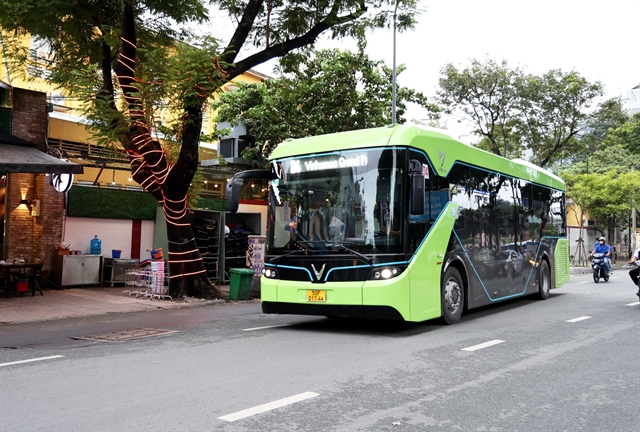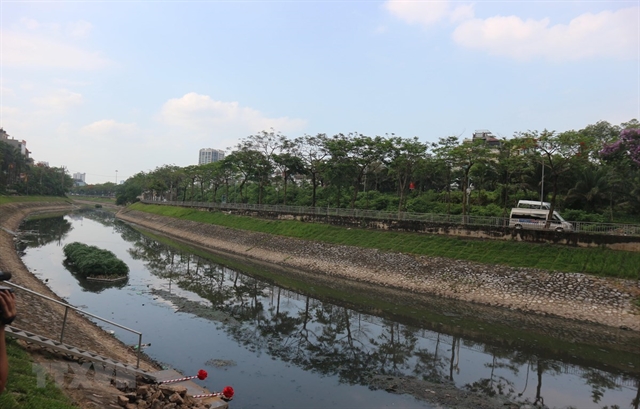 Environment
Environment


|
| The polluted Tô Lịch River in Hà Nội. — VNA/VNS Photo |
HÀ NỘI — A sewer system under the Tô Lịch River is being built using unprecedented technology designed by a Japanese company in a bid to clean up the notoriously polluted river.
This is part of the Yên Xá wastewater treatment system funded by Japanese Official Development Aid (ODA) with the goal of “resurrecting” the capital city’s rivers that are currently overwhelmed with raw sewage, by redirecting the untreated source of pollution to the treatment plant instead of discharging it directly into water sources.
The project includes the construction of the US$680-million Yên Xá wastewater treatment facility in Thanh Trì District with a processing capacity of 270,000 cu.m per day, and three underground sewer systems for the Lừ River, Hà Đông District and Tô Lịch River.
The entire length of the pipelines for the project is about 52.6km, with pipe diametres ranging from 315-2,200mm.
The construction of the underground sewer for the Tô Lịch River is the most important component of the four, which will be 21km long including a 11.4km section running through the river from Hoàng Quốc Việt Street in Cầu Giấy District to Quang Bridge in Thanh Trì District – which began on Monday afternoon.
The project is considered to be of key importance as it will collect wastewater from residential areas in the city’s crowded urban districts – Tây Hồ, Ba Đình, Đống Đa, Cầu Giấy and Hai Bà Trưng – and parts of the outlying rural districts of Thanh Trì and Hà Đông, in order to keep the Tô Lịch River clean.
A Japanese contractor is in charge of implementing this component.
This component will employ a tunneling method known as pipe jacking, which allows pipes to be laid 6-19m under the river’s bed along a 13km section.
According to Nguyễn Văn Hùng, director of the Hà Nội Management Board of Investment, Construction Projects on Water Supply, Drainage and Environment – the main investor of the project, the method caused little disruption to overground activities such as land clearance.
This would be the first time the method had been used in Hà Nội, Hùng added.
A JICA representative said that due to the importance of the Tô Lịch component, Hà Nội’s management board needed to make sure that all of JICA’s measures and guidelines regarding the environment, society and safety would be strictly observed during the implementation of the component.
Nguyễn Đức Chung, chairman of Hà Nội's People’s Committee, said the components for the project had “basically” met the anticipated progress, but insisted they should be completed ahead of schedule as people had been suffering from pollution in the river for many years now.
Tô Lịch used to be connected to the Red River but became what was colloquially known as ‘dead river’ when there was no water exchange with other freshwater sources while being subject to up to 150,000 cu.m of untreated household wastewater a day, a figure from Hà Nội’s environment department revealed.
The project was expected to help address the pollution in the Tô Lịch River and revive the waterway, a long-standing wish of many Hanoians, Chung said, adding that he expected the project to be operational in 2021. — VNS



.jpg)
